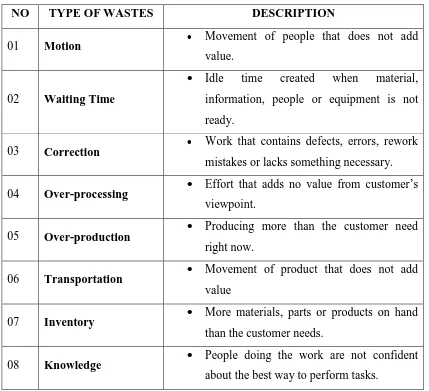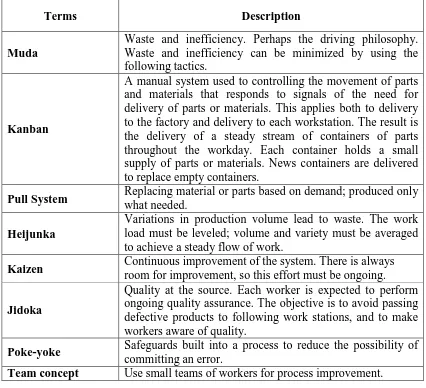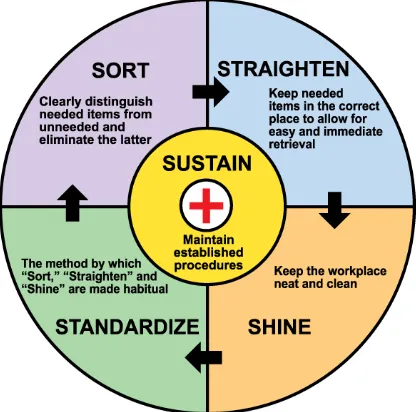UNIVERSITI TEKNIKAL MALAYSIA MELAKA
COST SAVING CAMPAIGN
This report submitted in accordance with requirement of the Universiti Teknikal Malaysia Melaka (UTeM) for the Bachelor Degree of Manufacturing Engineering
(Manufacturing Process) with Honours.
FARHANA BINTI MD.LAZI
B050710116
UNIVERSITI TEKNIKAL MALAYSIA MELAKA
BORANG PENGESAHAN STATUS LAPORAN PROJEK SARJANA MUDA
TAJUK: Cost Saving Campaign
SESI PENGAJIAN: 20010/ 11 Semest er 2
Saya FARHANA BINTI MD.LAZI
mengaku membenarkan Laporan PSM ini disimpan di Perpust akaan Universit i Teknikal Malaysia Melaka (UTeM) dengan syarat -syarat kegunaan sepert i berikut :
1. Laporan PSM adalah hak milik Universit i Teknikal Malaysia Melaka dan penulis. 2. Perpust akaan Universit i Teknikal Malaysia Melaka dibenarkan membuat salinan
unt uk t uj uan pengaj ian sahaj a dengan izin penulis.
3. Perpust akaan dibenarkan membuat salinan laporan PSM ini sebagai bahan pert ukaran ant ara inst it usi pengaj ian t inggi.
4. **Sila t andakan (√)
SULIT
TERHAD
TIDAK TERHAD
(Mengandungi maklumat yang berdarj ah keselamat an at au kepent ingan Malaysia yang t ermakt ub di dalam AKTA RAHSIA RASMI 1972)
(Mengandungi maklumat TERHAD yang t elah dit ent ukan oleh organisasi/ badan di mana penyelidikan dij alankan)
Alamat Tet ap: No 2, Jln Tepi,
Rumah Murah Sri Lalang, Kluang, Johor.
Tarikh: _________________________
Disahkan oleh:
PENYELIA PSM
Tarikh: _______________________
DECLARATION
I hereby, declared this report entitled “Cost Saving Campaign” is the results of my own research except as cited in references.
Signature : ……….
Author’s Name : FARHANA BINTI MD.LAZI
APPROVAL
This report is submitted to the Faculty of Manufacturing Engineering of UTeM as a partial fulfillment of the requirements for the degree of Bachelor of Manufacturing Engineering (Manufacturing Process) with Honours. The members of the supervisory committee are as follow:
Supervisor
………
Co-Supervisor
ABSTRACT
ABSTRAK
“Cost Saving Campaign” atau lebih tepat lagi kempen penjimatan kos adalah salah
ACKNOWLEDGEMENT
In the name of Allah the Almighty and Most Merciful……..
DEDICATION
TABLE OF CONTENT
2. LITREATURE REVIEW 5
2.3.3.1 Get Everyone Involved 12
2.3.3.2 Got Company Authorization 13
2.3.3.3 Final Responsibility Rests with the President 13
2.3.3.4 A Make Yourself Understood and Aware 13
2.3.3.5 Inspect the GEMBA (Shopfloor) Personally 13
2.4 Lean Manufacturing Tool and Techniques 14
2.4.1 Cellular Manufacturing 14
2.4.2 Continuous Improvement 14
2.4.3 Just-In-Time 15
2.4.4 Production Smoothing 15
2.4.5 Standardization of Work 15
2.5 Summary 16
3. METHODOLOGY 17
3.1 Overview of the Methodology 17
3.2 Approach 17
3.3 Kaizen Methodology 20
3.3.1 Define Pilot Area 20
3.3.2 Select Kaizen Team 21
3.3.3 Determine Process Work Standard 21
3.3.4 Identify Process Current Level 21
3.3.5 Learn on the Work Process 22
3.3.6 Identify Work Process Measure 22
3.3.7 Document a Proposed Application of Kaizen 22
3.4 PDCA Approach 23
3.4.1 PLAN STAE 23
3.4.1.1 Define the Problem 23
3.4.1.2 Root Cause 24
3.4.1.3 Collect Data 24
3.4.1.4 Analyze and Established Solution 24
3.4.2 DO STAGE 24
3.4.3 CHECK STAGE 24
3.4.4 ACT STAGE 25
3.5.1 Sort 25
4. RESULT AND DISCUSSION 29
4.1 Result 29
5. CONCLUSION AND FUTURE WORK 42
5.1 Summary of Project 42
5.2 Project Finding 42
5.3 Future Work 43
5.3.1 Database Interface 44
5.4 Conclusion 47
REFFERENCES 48
APENDICES
A Gantt Chart
LIST OF TABLES
1.1 The list of eight wastes (Taj and Berro, 2005) 2 2.1 List of terms Toyota approach. (Stevenson, 2009) 7 2.2 The list of Eight Wastes.(Taj and Berro,2006) 8
4.1 The data of patrol check 33
4.2 The improvement achieves 37
LIST OF FIGURES
2.1 The 5s Methodology. (http://www.lean.state.mn.us, 2010) 10
3.1 Flow Chart of the Project FYP 1 and 2 19
3.2 The scrap and unnecessary item. (FKP, 2010) 20 3.3 PDCA Cycle (http://www.tokyo-gas.co.jp) 23
3.4 Recycle Bin. (http://www.ust.hk) 26
3.5 Tools rack. 26
4.1 The process flow of purchase order procedure 30
4.2 The sample of Application Form 31
4.3 Layout of FKP laboratories 32
4.4 The sample of flyers 36
4.5 The condition of FKP Store. (FKP, 2011) 39
CHAPTER 1
INTRODUCTION
This chapter contains the overview of the cost saving campaign in Fakulti Kejuruteraan Pembuatan (FKP). The problem statement and objective of the study are also included. It is followed by the scope, and structure of the project.
1.1 Background
The definition of saving by referring to lean dictionary is “continuous improvement focuses on cost reduction” and campaign can be defined as “organized course of action” as referring the dictionary Oxford (3rd edition). However, the words of saving campaign can be summarized as continuous improvement focuses on cost reduction can be conducted by launching a campaign. This project is the one of methods that is using to minimize, reducing and controlling the wastes in FKP laboratories.
In Japanese, waste is known as “Muda”. According to Taj and Berro(2005), waste is anything other than minimum amount of equipments, materials, parts, and working time that are absolutely essential to production. Waste elimination is one of the most effective ways to increase the profitability of any business.
analysis and earned value analysis, performance and control can be enhanced. (Lester, 2006)
There are eight wastes as in (Table 1.1) consist of:
Table 1.1: The list of eight wastes (Taj and Berro, 2005)
NO TYPE OF WASTES DESCRIPTION
01 Motion • Movement of people that does not add
value.
02 Waiting Time
• Idle time created when material, information, people or equipment is not ready.
03 Correction • Work that contains defects, errors, rework
mistakes or lacks something necessary. 04 Over-processing • Effort that adds no value from customer’s
viewpoint.
05 Over-production • Producing more than the customer need
right now.
06 Transportation • Movement of product that does not add
value
07 Inventory • More materials, parts or products on hand
than the customer needs.
08 Knowledge • People doing the work are not confident
about the best way to perform tasks.
However, this project only focused on minimizing, reducing and controlling the several wastes in FKP laboratories. This project started by observing the selected area.
1.2 Problem Statement
Basically, this project desired to reduce, minimize and control the wastes that happen in FKP laboratories. The FKP Store, Machine Shop and Material lab will be selected as the target area. The problems faced by FKP Store are; there is no systematic system that controlling the inventory, and incompatible layout. The 5’S methods are not implemented thoroughly in FKP laboratories that cause certain areas are not managed properly. In addition, the scraps and unnecessary items are not organized nicely. The unnecessary items are been thrown away in the area behind the laboratories without notification that the items want to be recycled. All these problems can increase the cost. From this project, the cost can be reduced by applying several methods to control, minimize and reduce the wastes. From the patrol check that will be done twice a month, it will help in constructing ideas on how to launch and implement the campaign properly.
1.3 Objectives
This project is done by launching the cost saving campaign in UTeM. The objectives of carrying out this project are:
1.4 Scope
This project is a campaign to reduce the cost of inventory in FKP store. It will emphasize focus primarily in reducing or cutting cost by controlling the usage of raw material, machines tool uses, and stationeries in FKP. There are several methods that can be applied to achieve the objectives of this project.
1.5 Writing Structure
Chapter 1, discussed about background of the project, problem statement, objectives, scope of study, and writing structure. For the chapter one is the introduction for the project.
Next, Chapter 2, discussed about the literature review. For the literature review, need to summarize the journals on cost saving campaign and method can be use to achieve the campaign. It also must included summarize and find the solution to reducing the cost in FKP.
Chapter 3, discussed about the methodology. The methodology is the step and method used to complete the report. In this part, the flow chart from the beginning until the end of the project. This part also discussed the method used to cover the cost saving campaign.
CHAPTER 2
LITREATURE REVIEW
This chapter contains the theory of the fundamental involved in the study. Besides that, the related journals are also included. At the end of this chapter, a summary of the study is included.
2.1 The History of Lean Manufacturing
The roots of lean manufacturing originate with early automobile manufacturing. The master craftsmen that first built individual cars possessed a wide range of skills and abilities, but with low efficiency and at high cost. Henry Ford recognized these limitations and broke the assembly process down into 30-second tasks, which were performed almost a thousand times a day .In the 1950’s, Eiji Toyoda and Taiichi Ohno merged the knowledge and skill of master craftsmen with the standardization and efficiency of the moving assembly line and added the concept of teamwork to create the Toyota Production System (TPS). John Krafcik introduced the term “lean production system” in 1988 in his review of the Toyota Production System, and the term “lean manufacturing” was popularized by Womack et al. (1990), in The Machine that Changed the World. (Worley and Doolen, 2006)
2.2 Lean Manufacturing
(2004) the lean was defined as the systematic removal of waste by all members of the organization from all areas of the value stream.
Lean manufacturing is a performance-based process used in manufacturing organizations to increase competitive advantage. The basics of lean manufacturing employ continuous improvement processes to focus on the elimination of waste or non-value added steps within an organization. The challenge to organizations utilizing lean manufacturing is to create a culture that will create and sustain long-term commitment from top management through the entire workforce. (H. McGivern and Striber, 2000).
Lean manufacturing techniques are based on the application of five principles to guide management’s actions toward success:
• Value: The foundation for the value stream that defines what the customer is
willing to pay for.
• The Value Stream: The mapping and identifying of all the specific actions
required to eliminate the non-value activities from design concept to customer usage.
• Flow: The elimination of all process stoppages to make the value stream
“flow” without interruptions.
• Pull: The ability to streamline products and processes from concept through
customer usage.
• Perfection: The ability to advocate doing things right the first time through
the application of continuous improvement efforts.
2.2.1 The Toyota Approach
According to Stevenson,(2009) many of the methods that are common to learn operations were developed as part of Japanese car maker Toyota’s approach to manufacturing. Below are senses of the approach from some of the terms commonly associated with lean operations. Table 2.1 shows the list of terms Toyota approach according to Stevenson (2009).
Table 2.1: List of terms Toyota approach. (Stevenson, 2009)
Terms Description
Muda
Waste and inefficiency. Perhaps the driving philosophy. Waste and inefficiency can be minimized by using the following tactics.
Kanban
A manual system used to controlling the movement of parts and materials that responds to signals of the need for delivery of parts or materials. This applies both to delivery to the factory and delivery to each workstation. The result is the delivery of a steady stream of containers of parts throughout the workday. Each container holds a small supply of parts or materials. News containers are delivered to replace empty containers.
Pull System Replacing material or parts based on demand; produced only
what needed.
Heijunka
Variations in production volume lead to waste. The work load must be leveled; volume and variety must be averaged to achieve a steady flow of work.
Kaizen Continuous improvement of the system. There is always
room for improvement, so this effort must be ongoing.
Jidoka
Quality at the source. Each worker is expected to perform ongoing quality assurance. The objective is to avoid passing defective products to following work stations, and to make workers aware of quality.
Poke-yoke Safeguards built into a process to reduce the possibility of
committing an error.
Team concept Use small teams of workers for process improvement.
2.2.1.1 Muda
to reduce or eliminate its effect on a company, thereby improving overall performance and quality. (The Manufacturing 7 Wastes,2003)
Following to Taj,(2006) the eight wastes as in Table 2.2 consist of:-
Table 2.2: The list of Eight Wastes.(Taj and Berro,2006)
NO TYPE OF WASTES DESCRIPTION
01 Motion • Movement of people that does not add
value.
02 Waiting Time
• Idle time created when material, information, people or equipment is not ready.
03 Correction • Work that contains defects, errors, rework
mistakes or lacks something necessary. 04 Over-processing • Effort that adds no value from customer’s
viewpoint.
05 Over-production • Producing more than the customer need
right now.
06 Transportation • Movement of product that does not add
value
07 Inventory • More materials, parts or products on hand
than the customer needs.
08 Knowledge • People doing the work are not confident
about the best way to perform tasks.
2.2.1.2 Kaizen
Following the article KAIZEN, the key to understanding Japanese Success, Kaizen is a Japanese term that means continuous improvement, taken from words (‘kai’), which means continuous and (‘zen’) which means improvement. Some translate ‘kai’ to mean change and ‘zen’ to mean good, or for the better.
Kaizen starts with a problem with the recognition that a problem exists. Where there are no problems, there is no potential for improvement. A problem in business is anything that inconveniences people downstream, either people in the next process or ultimate customers.
To implementation of Kaizen, the standardization is the way of spreading the benefits of improvement throughout the organizations. Everyone must be mindful of the standard-even management.
In addition, a team is needed to be set up to look the improvement of Kaizen in workplace. The employees within the Kaizen team need to be trained in Kaizen logic. The underlying of Kaizen is that it makes employees become aware that by using the Kaizen logic to improve a process, results in the business becoming more successful, which lends itself to meaning more job security for the employee.
2.3 Introduction of 5S
2.3.1 5s Methods
5S implementation methodology is a system to reduce workplace waste and optimize productivity by maintaining an orderly workplace. The use of visual reminders helps to achieve consistent improvements as well. 5S Implementation "cleans up" and organizes the workplace, without changing its existing configuration, and it is typically the first lean method which an organization puts into effect. Figure 2.1 shows the 5’s methodology
Figure 2.1: The 5s Methodology. (http://www.lean.state.mn.us, 2010)
The 5S pillars, Sort, Straighten, Sweep, Standardize, and Sustain, provide a methodology for organizing, cleaning, developing, and sustaining a productive work environmentThis lean manufacturing method encourages workers to improve their working conditions and helps them to learn to reduce waste, unplanned downtime, and in-process inventory.
2.3.2 The Approach to 5S Implementation
2.3.2.1 Sort
This focuses on identifying all unnecessary items from the workplace which are not needed for day to day operations. These items receive a red tag and are placed in a central location for everyone to see and decide what to do with. Many times these are useful items, but used so rarely that they need to be discarded, given away or moved to a storage area. It is surprising how much space can be liberated from just this one process. Vast amounts of valuable floor space suddenly become available for more productive work.
2.3.2.2 Straighten
Once sorting has taken place, it will create efficient storage methods item can
be easy to locate and use, as well as put away. This would include labeling drawers, tool racks, boxes, shelves, etc. The sorting method will define areas such as storage, first-aid, shipping, etc. By applying the sorting, the employees can keep a workplace orderly and efficient.
2.3.2.3 Sweep
Sweep means to clean, to thoroughly remove clutter and fix things. A daily follow-up cleaning is essential in order to sustain the new improvements. Everyone likes working in a clean environment, plus it often happens that damaged wires, pipes, electrical outlets, etc. are discovered and repaired. This is also a safety feature of 5S.It is also a good idea to establish targets before beginning the sweep process. This helps keep everyone focused and accountable.
2.3.2.4 Standardize



